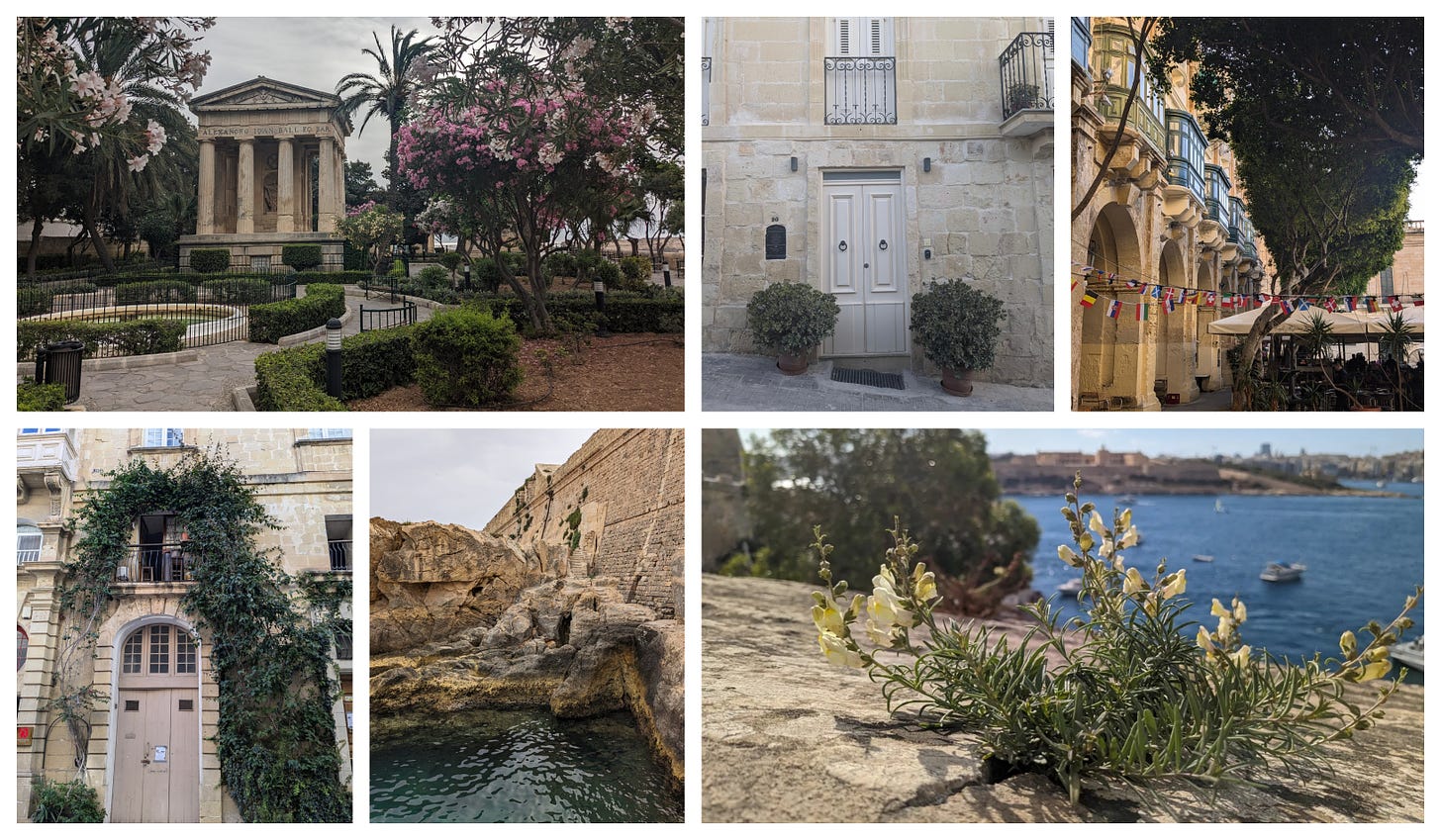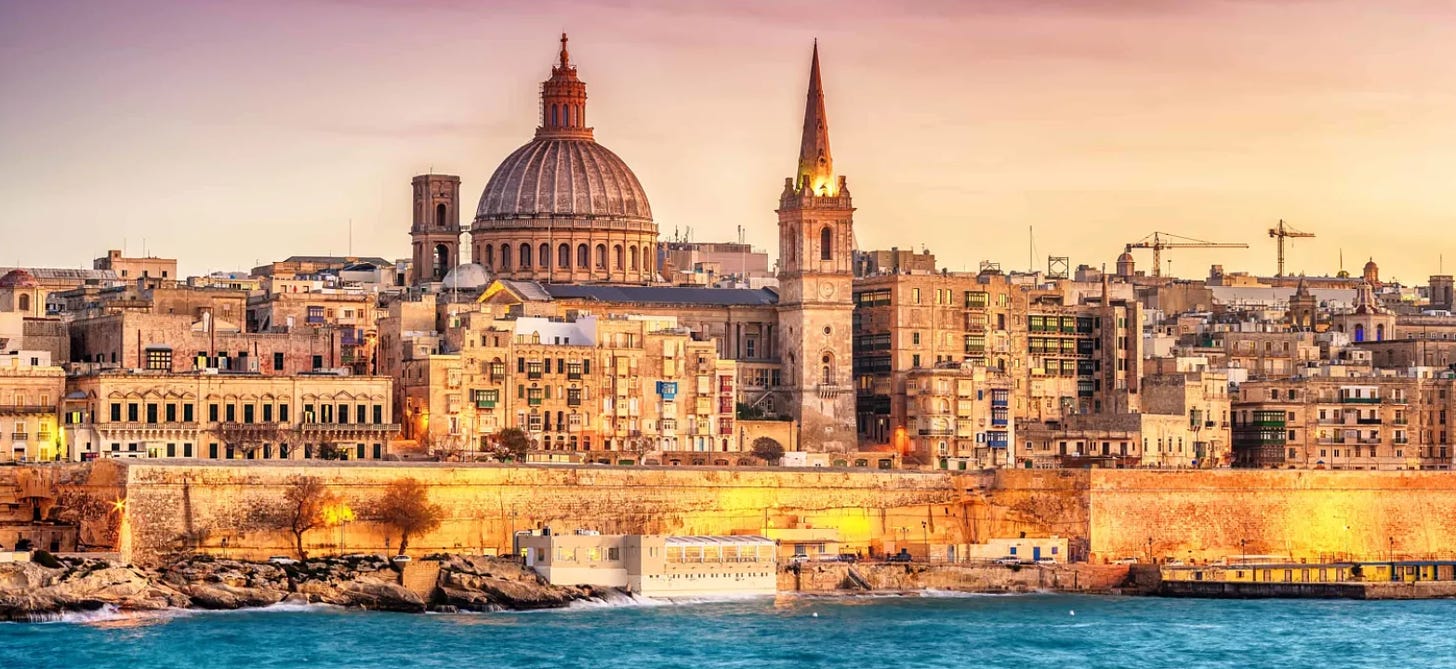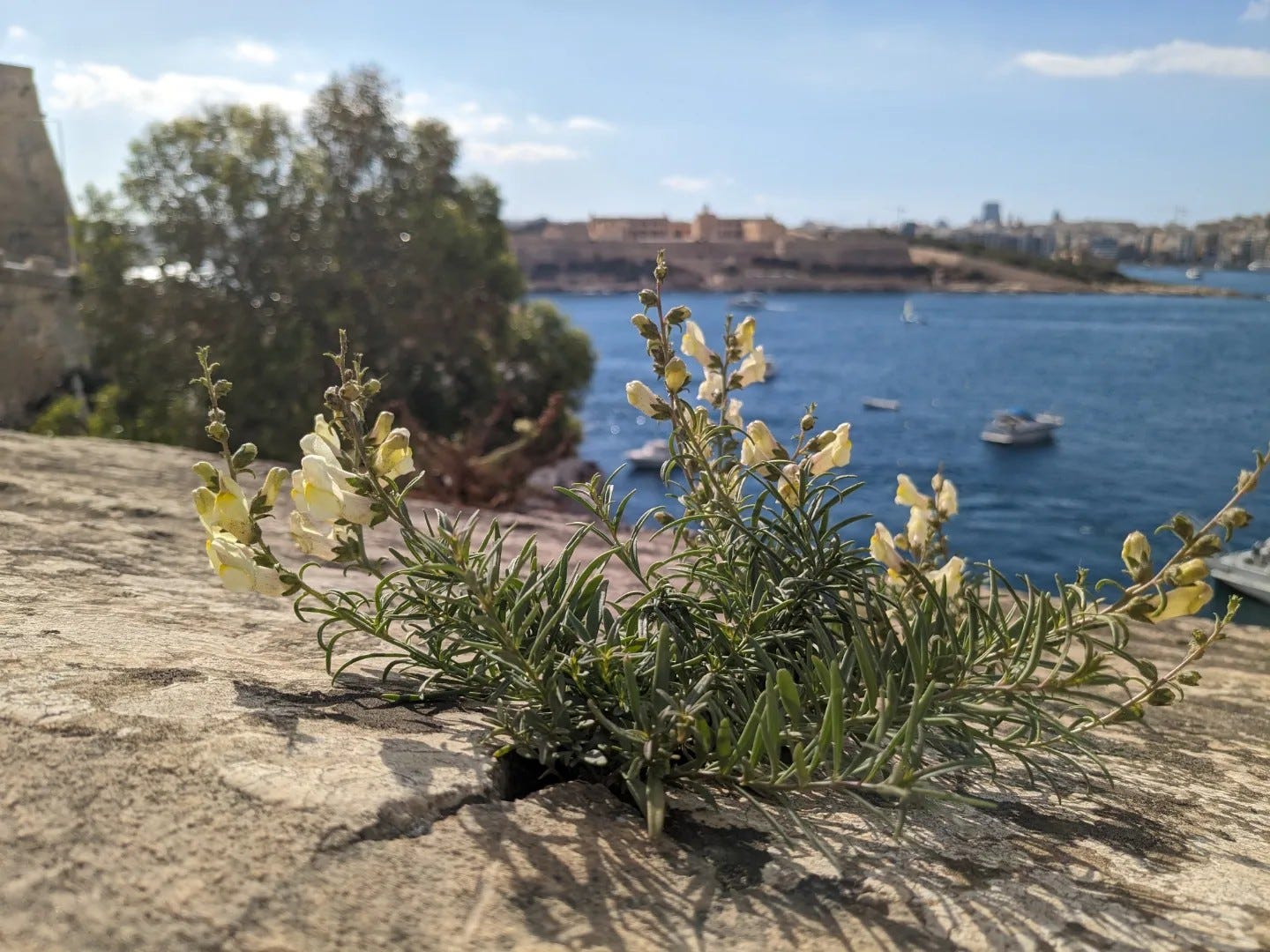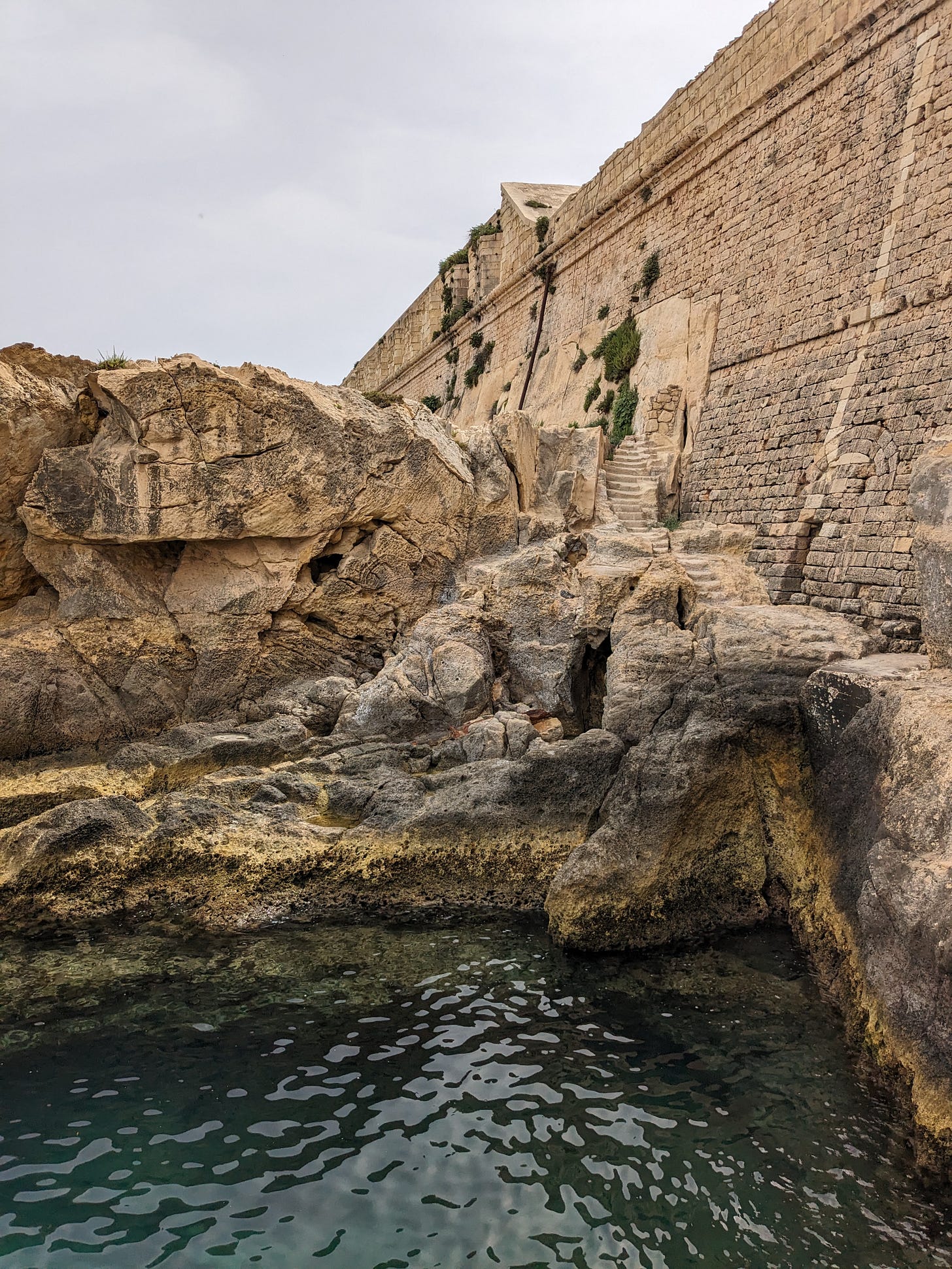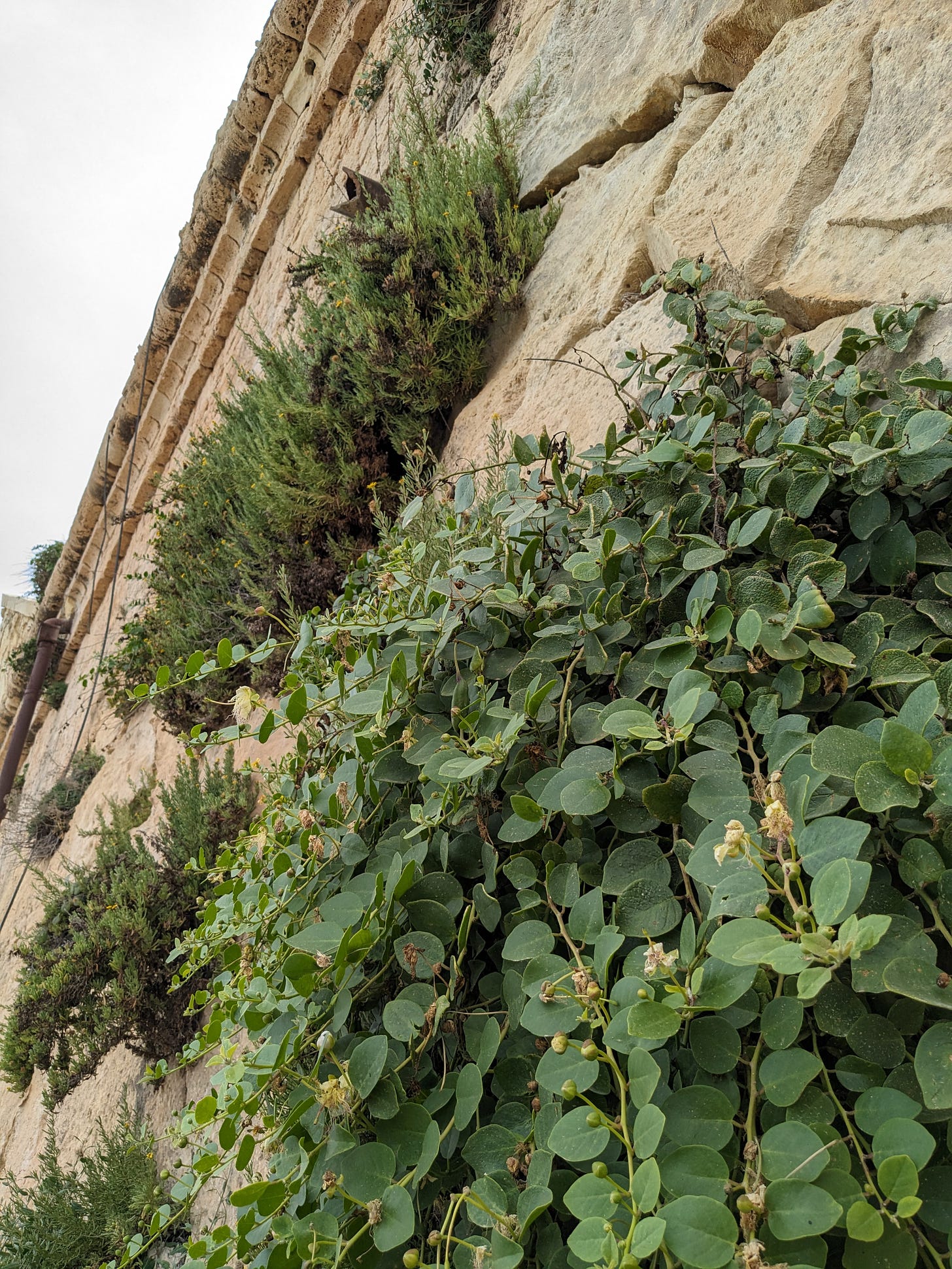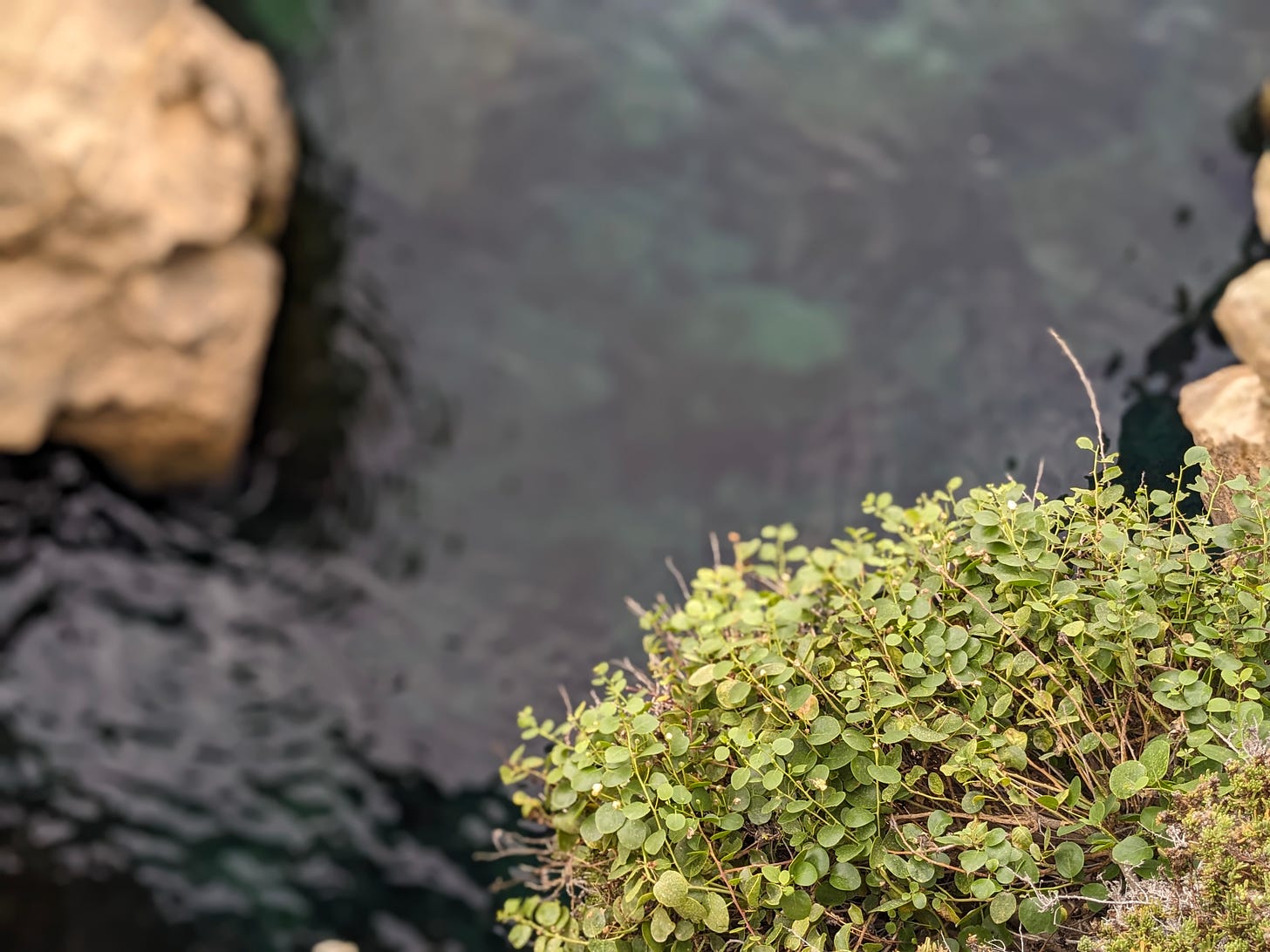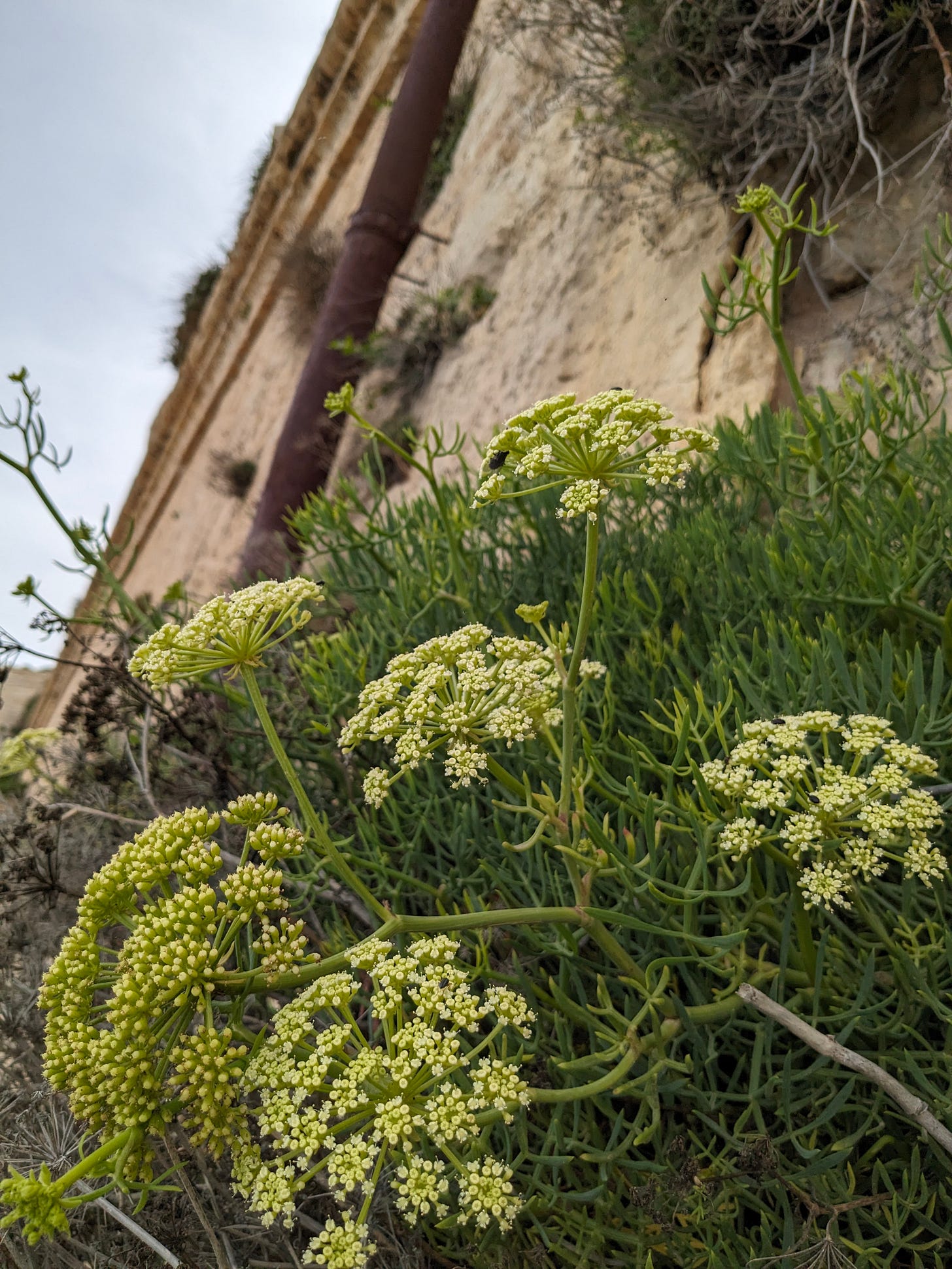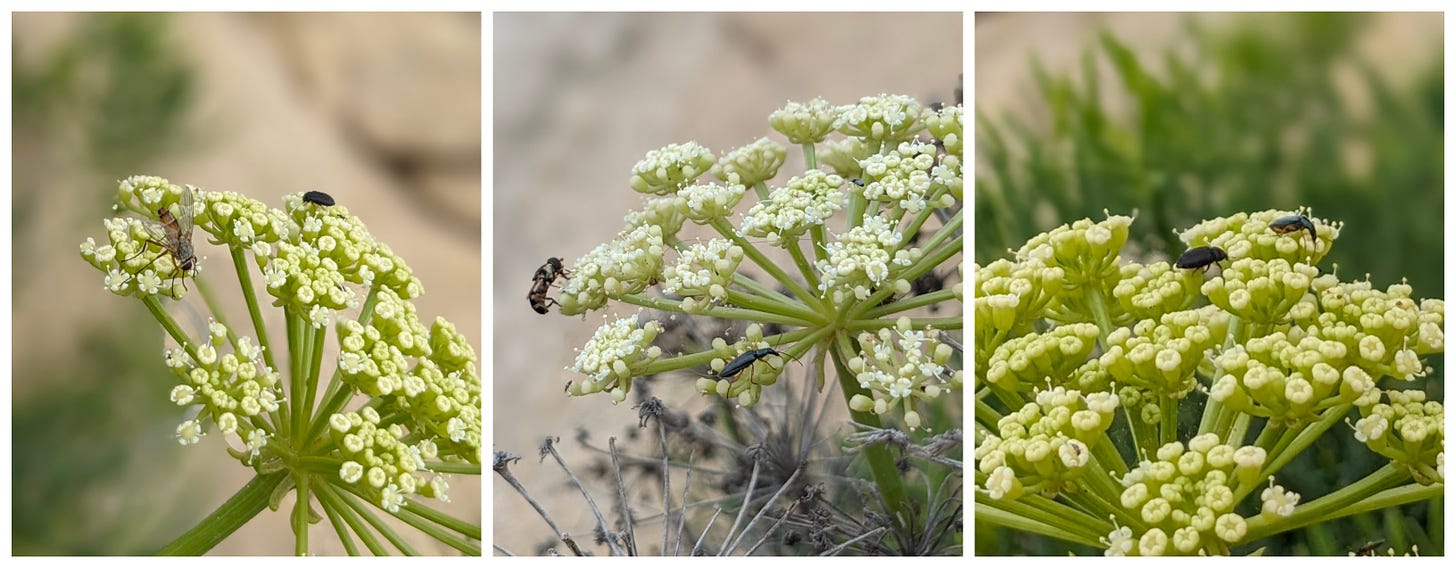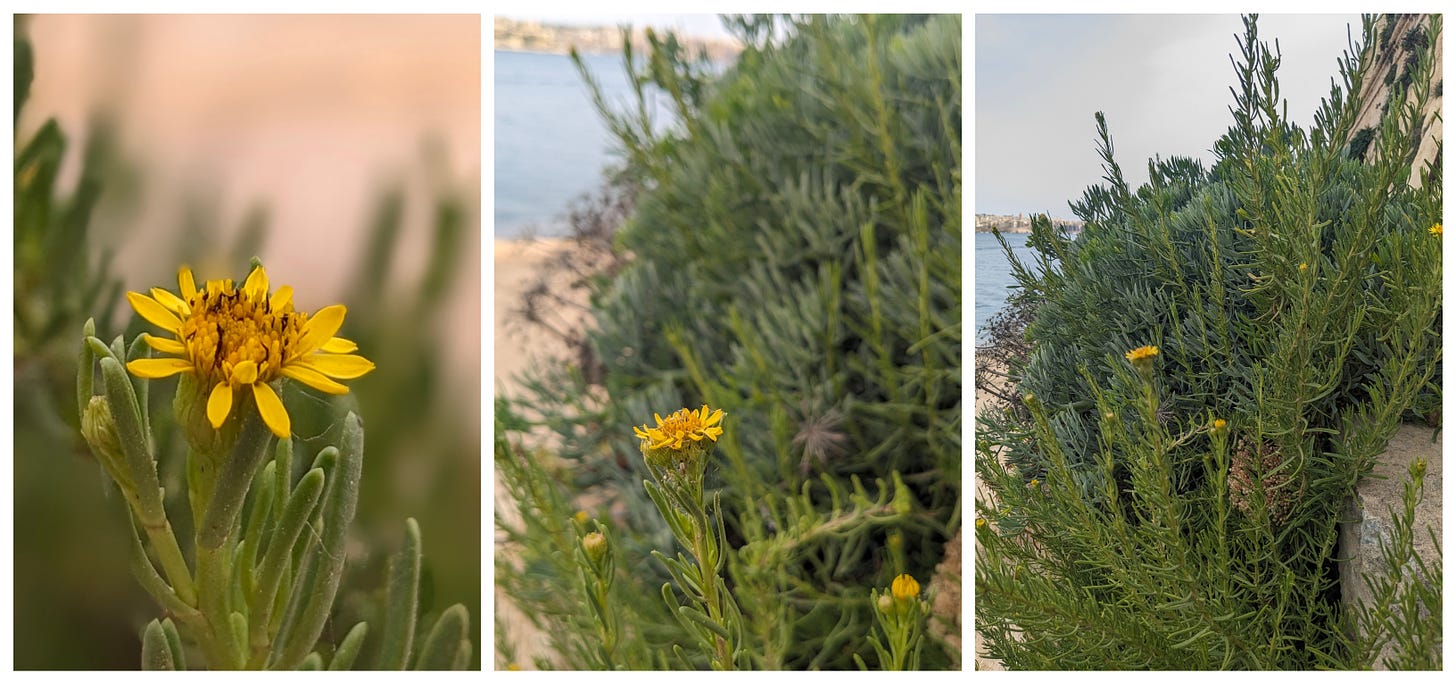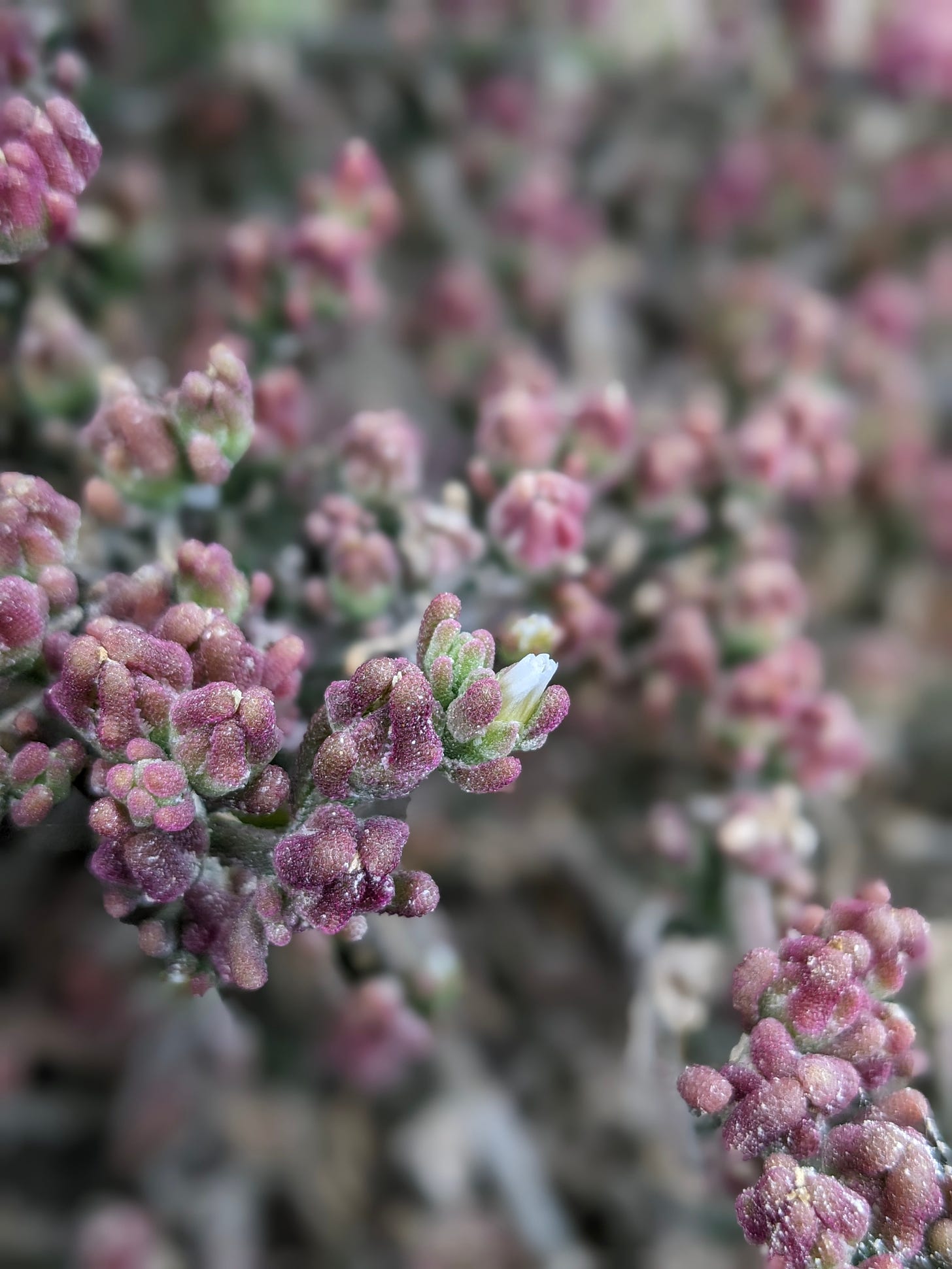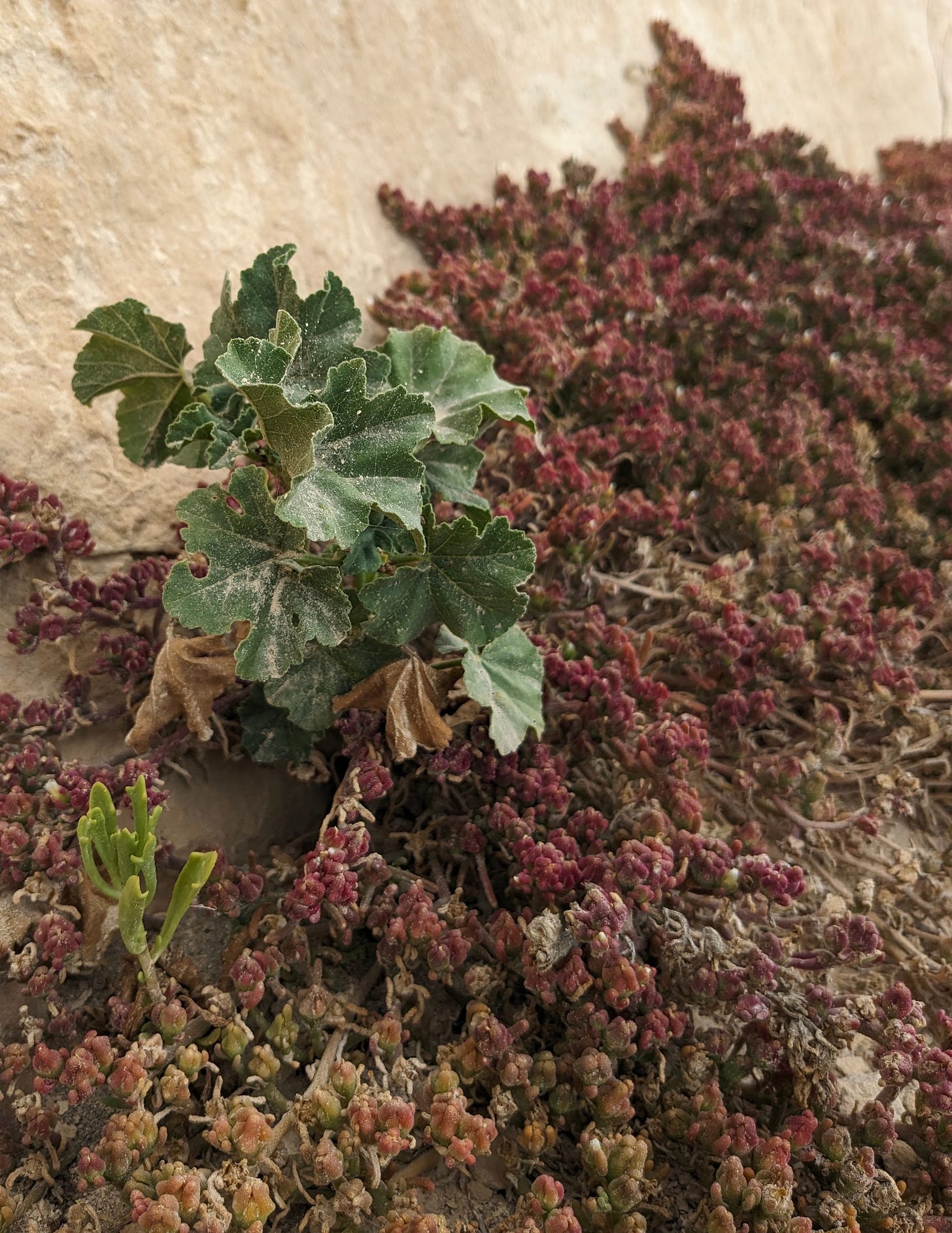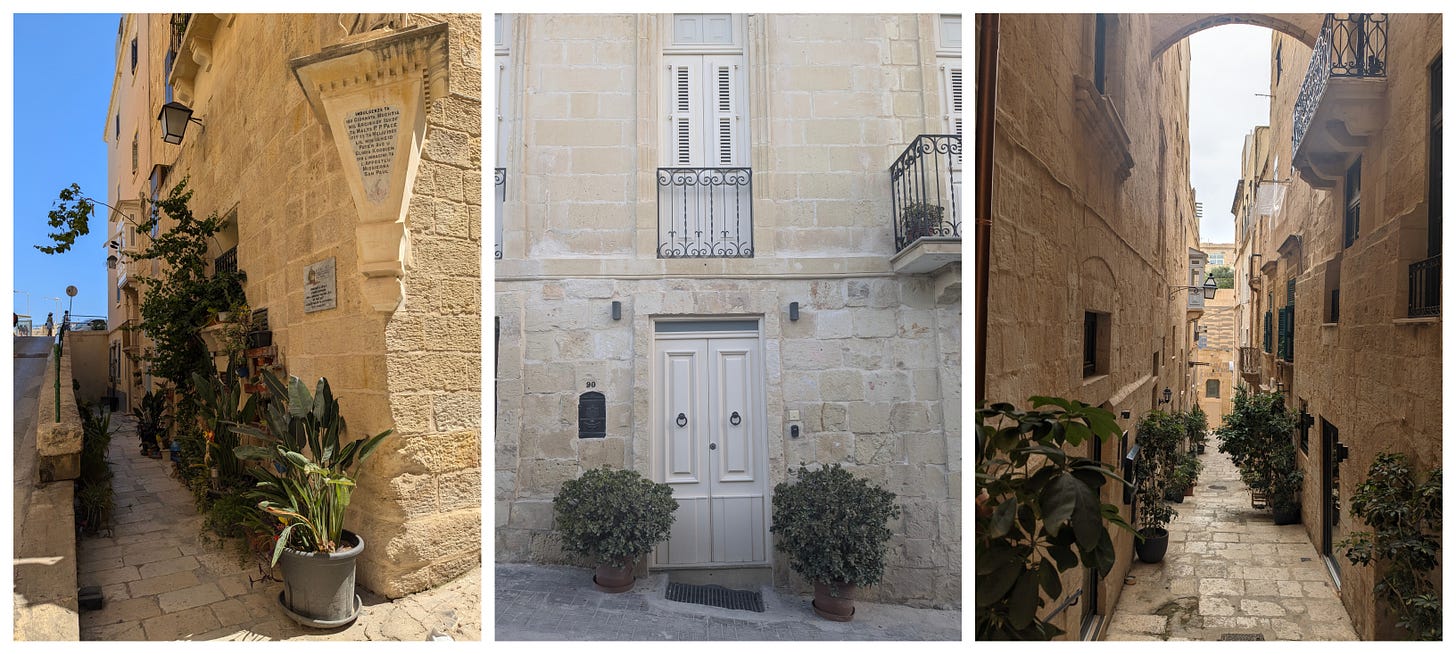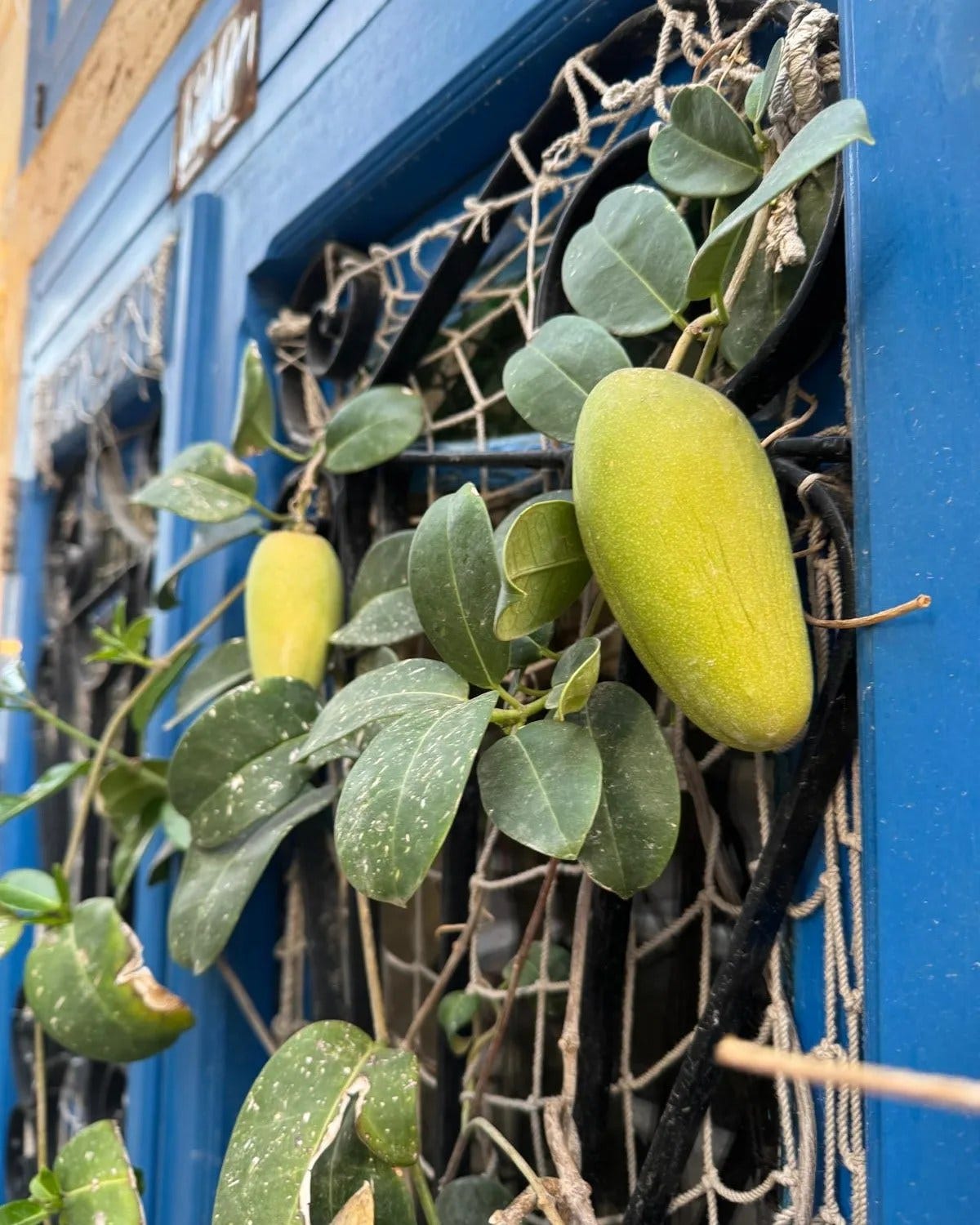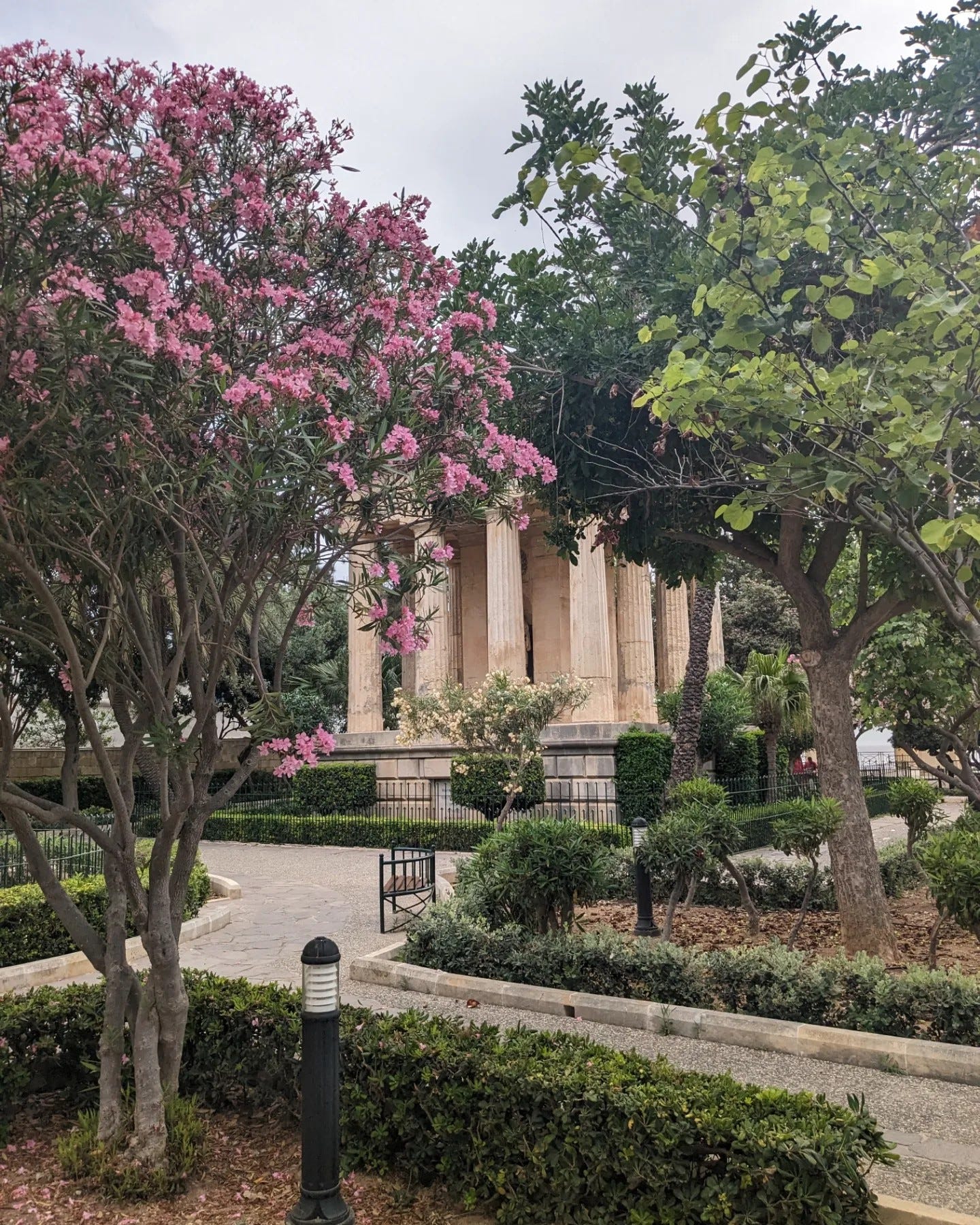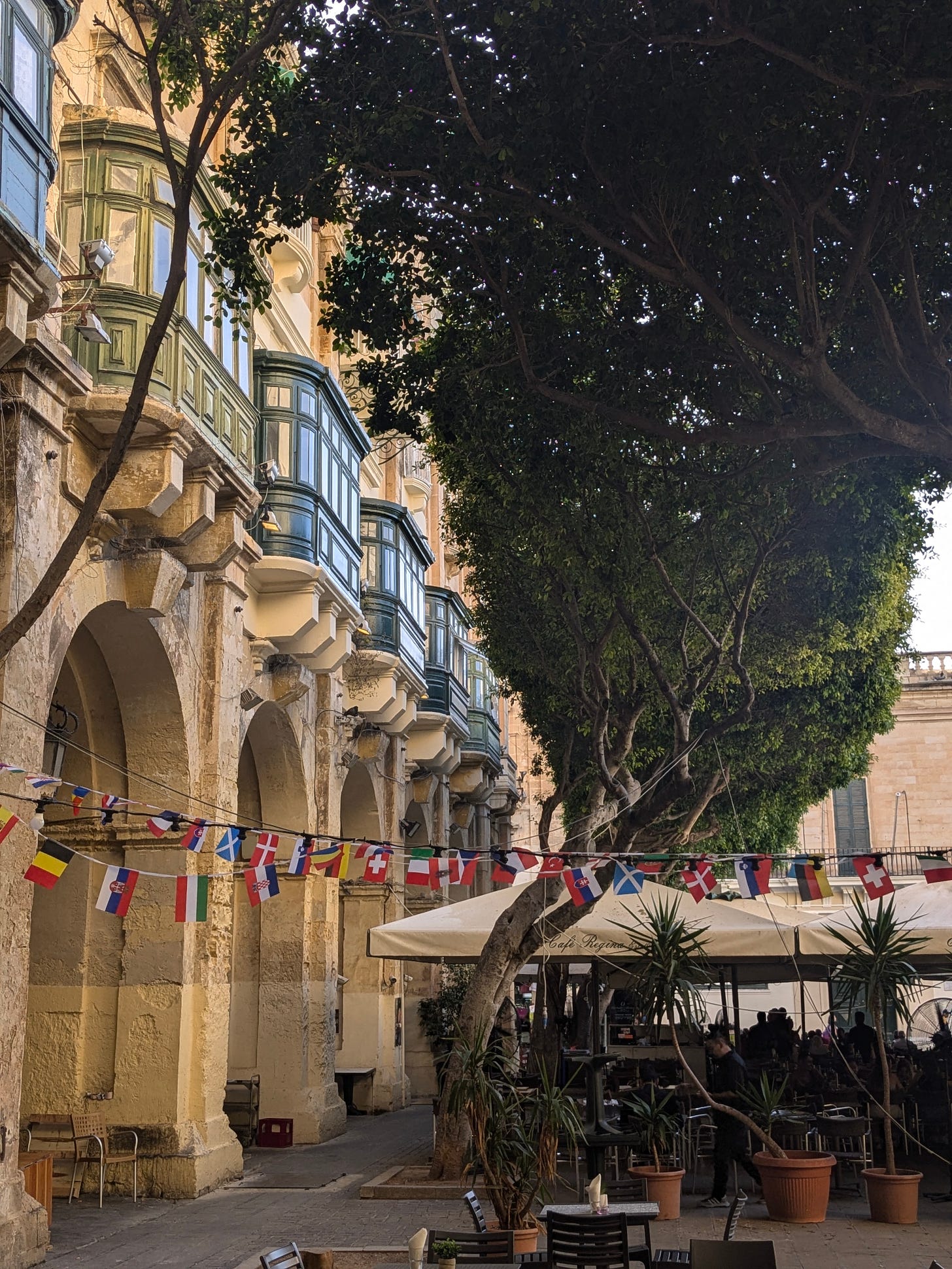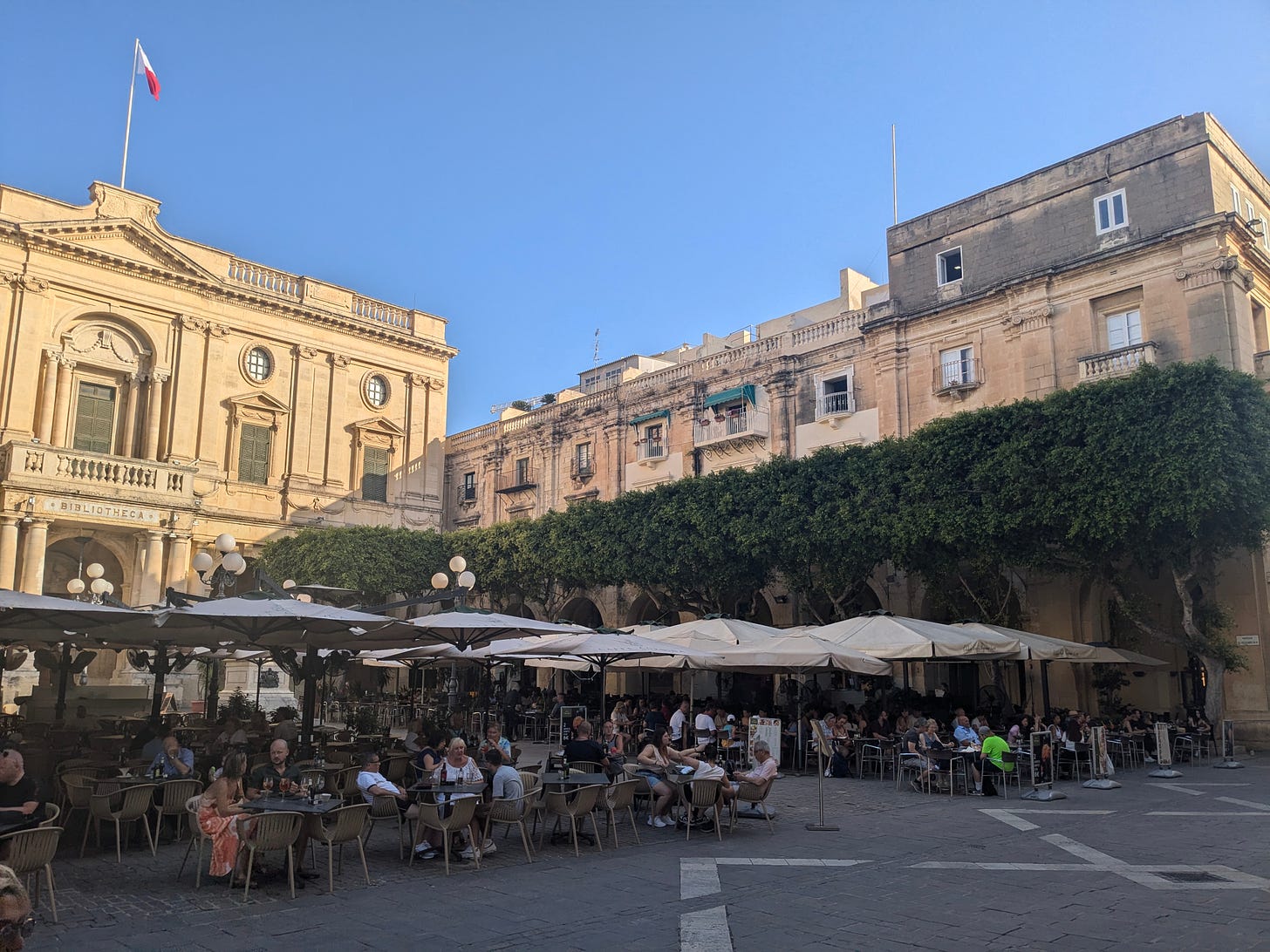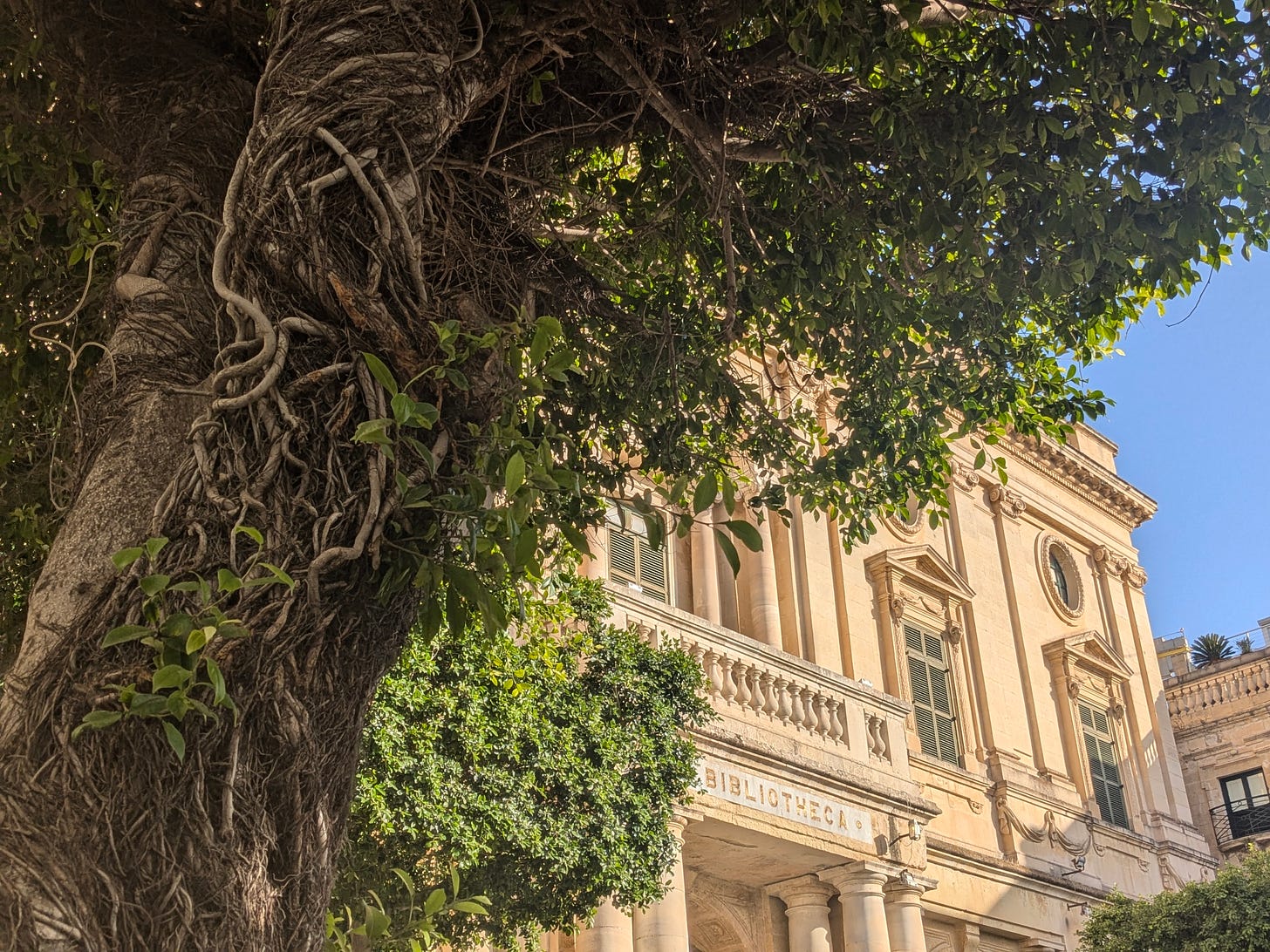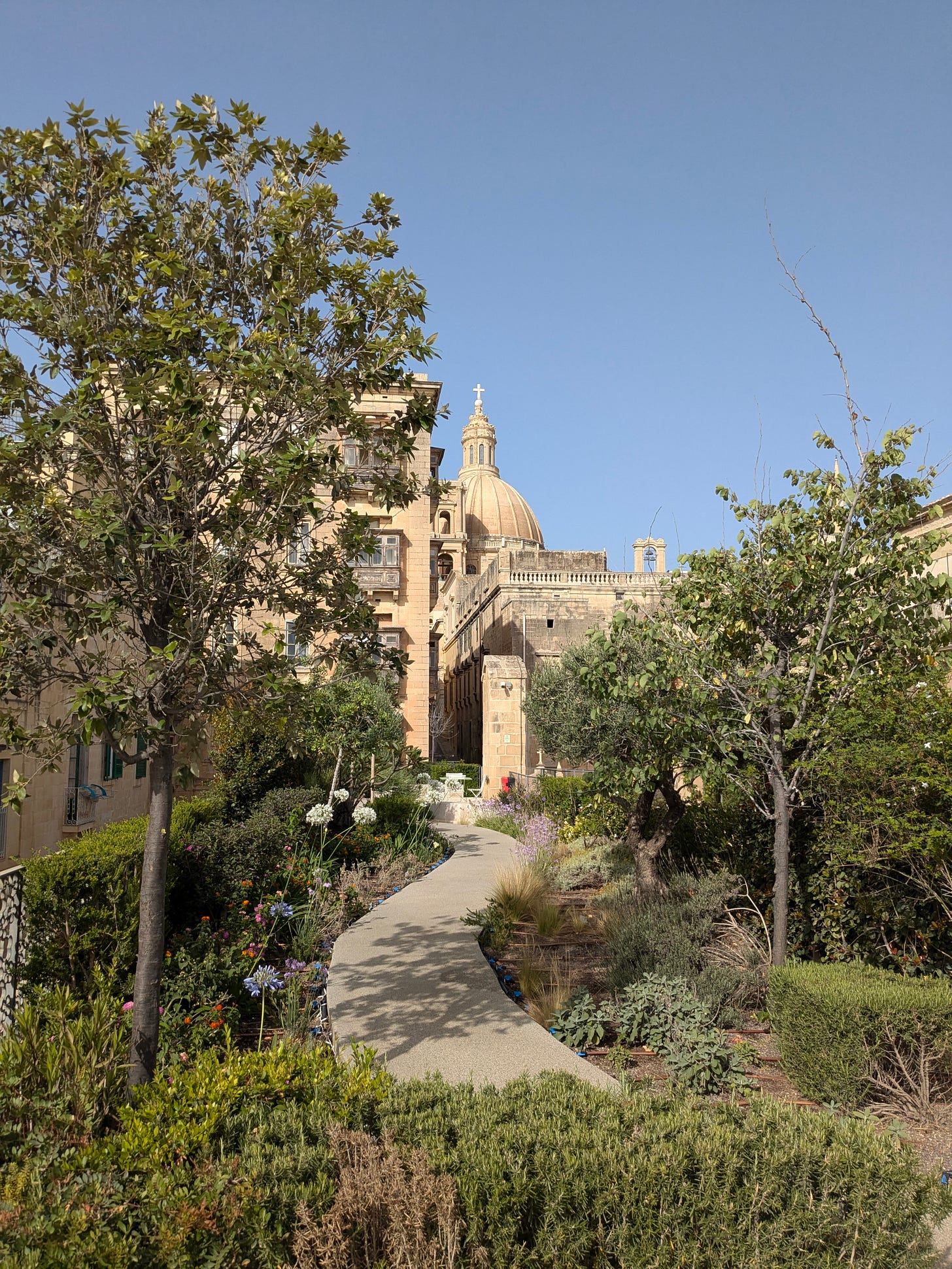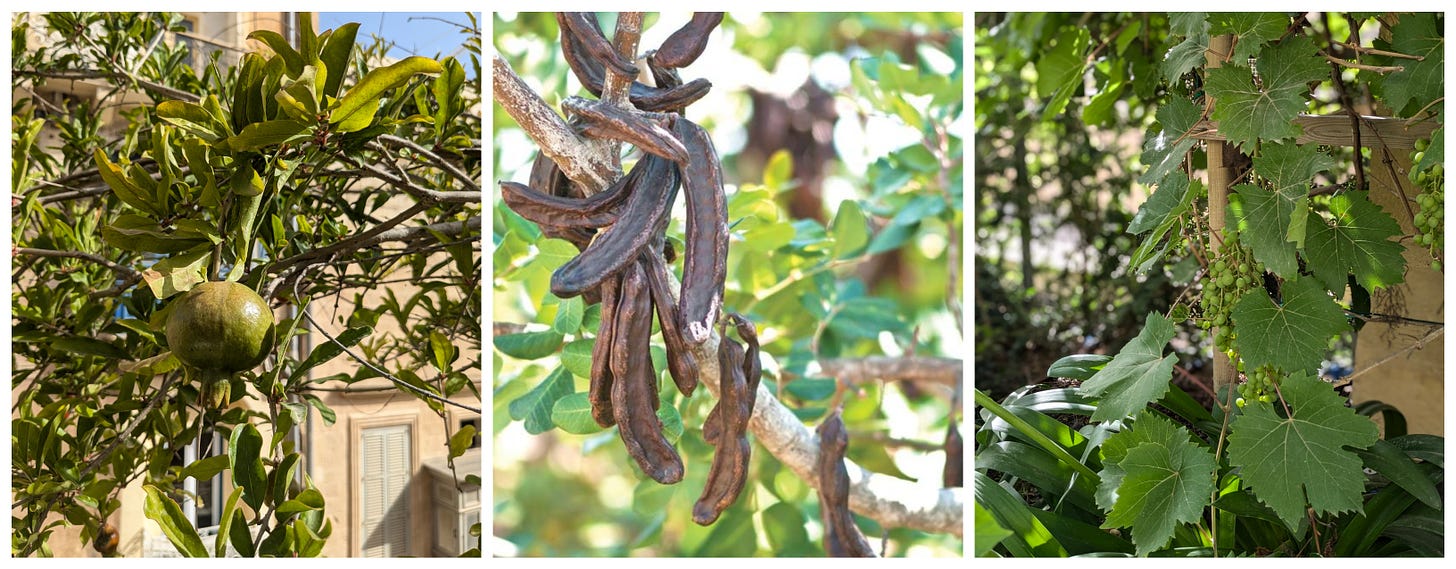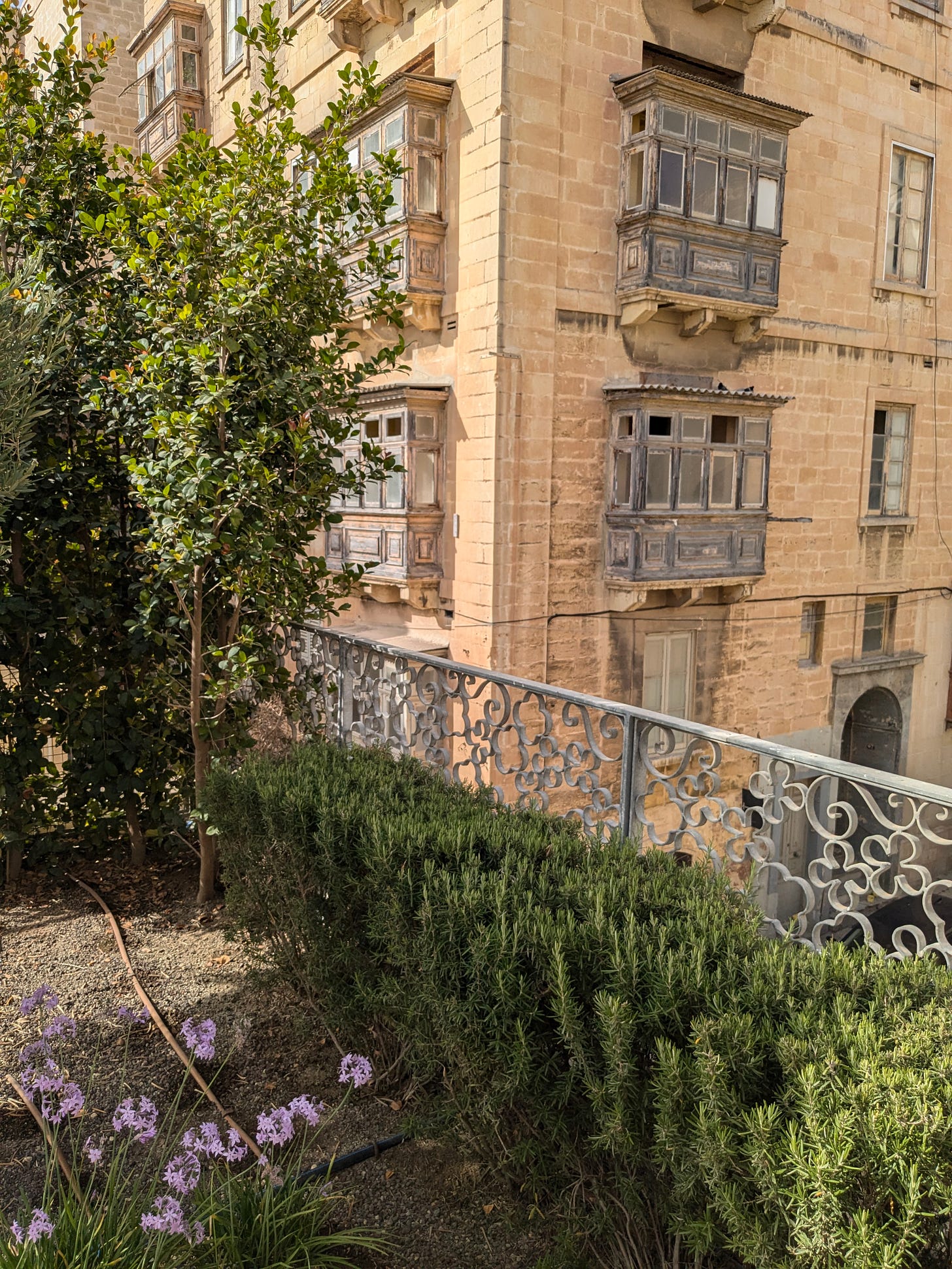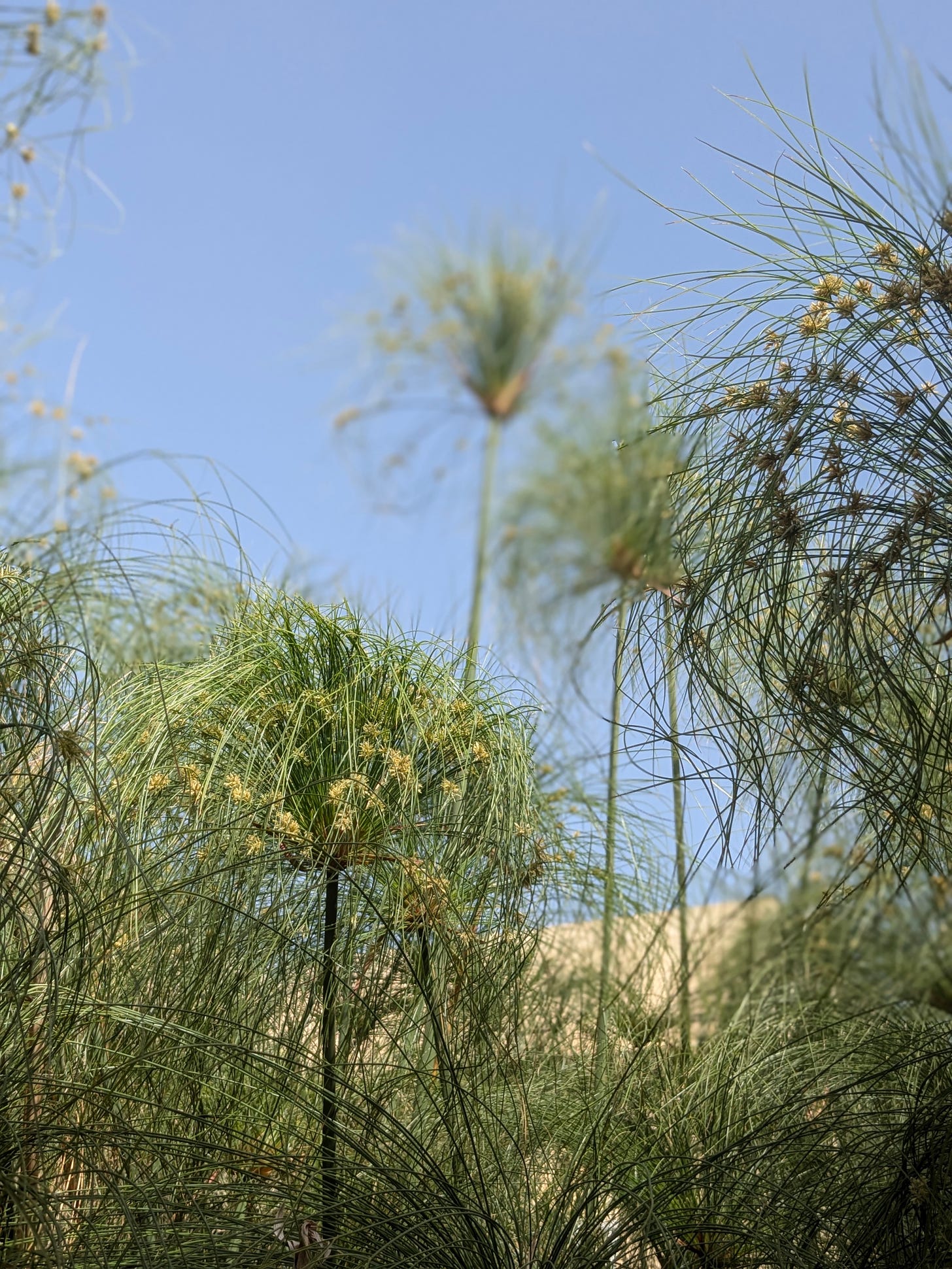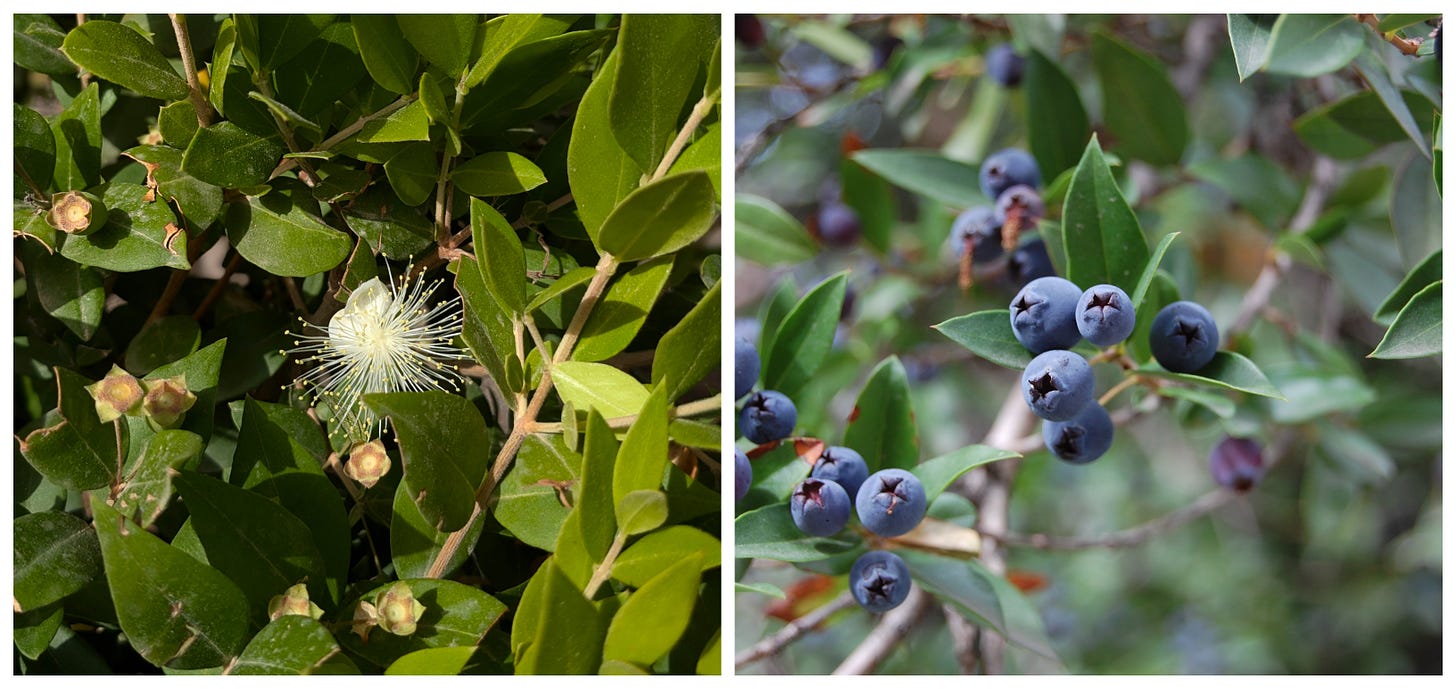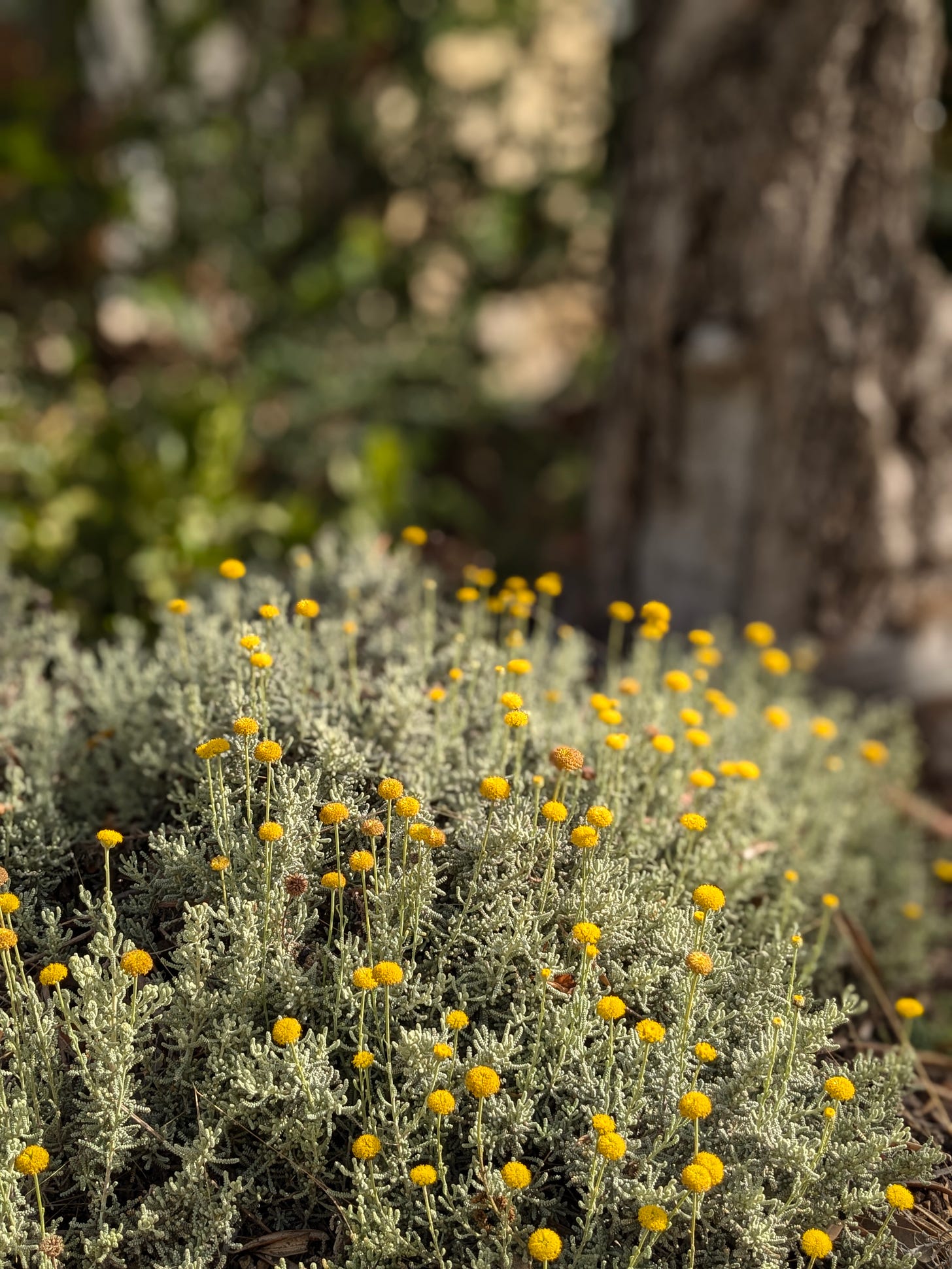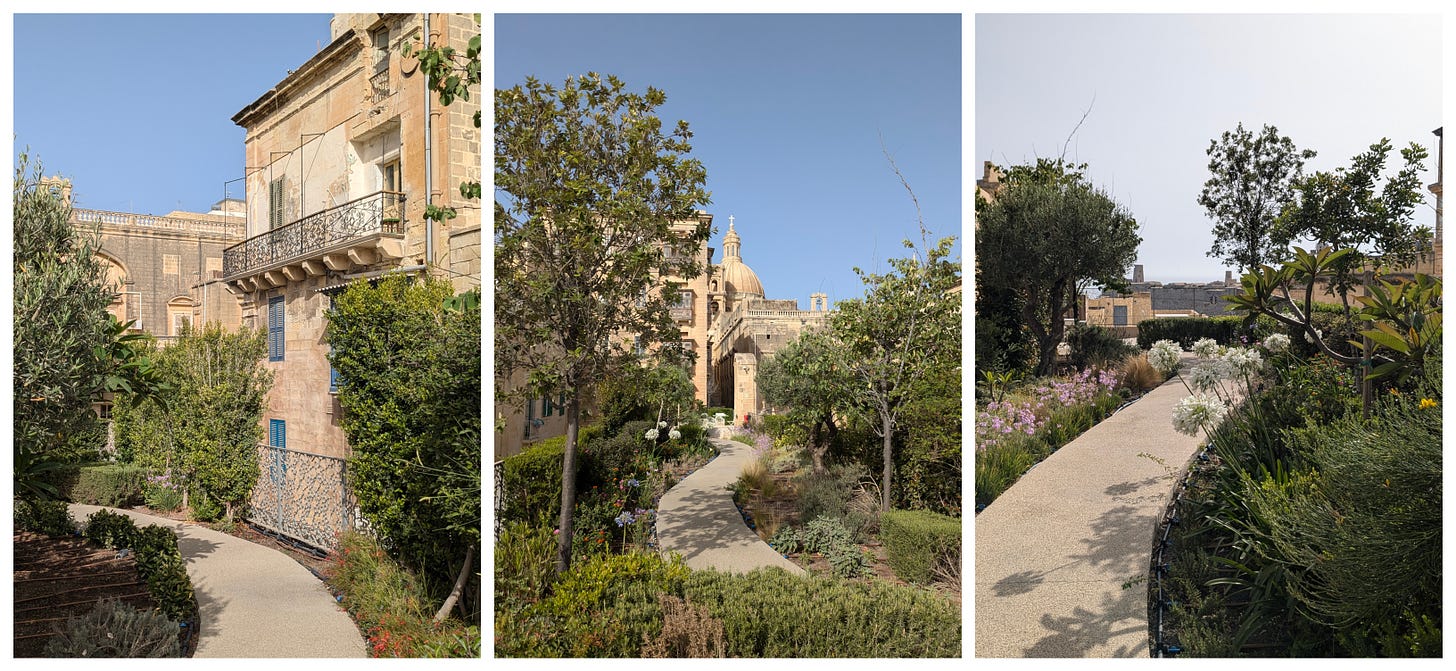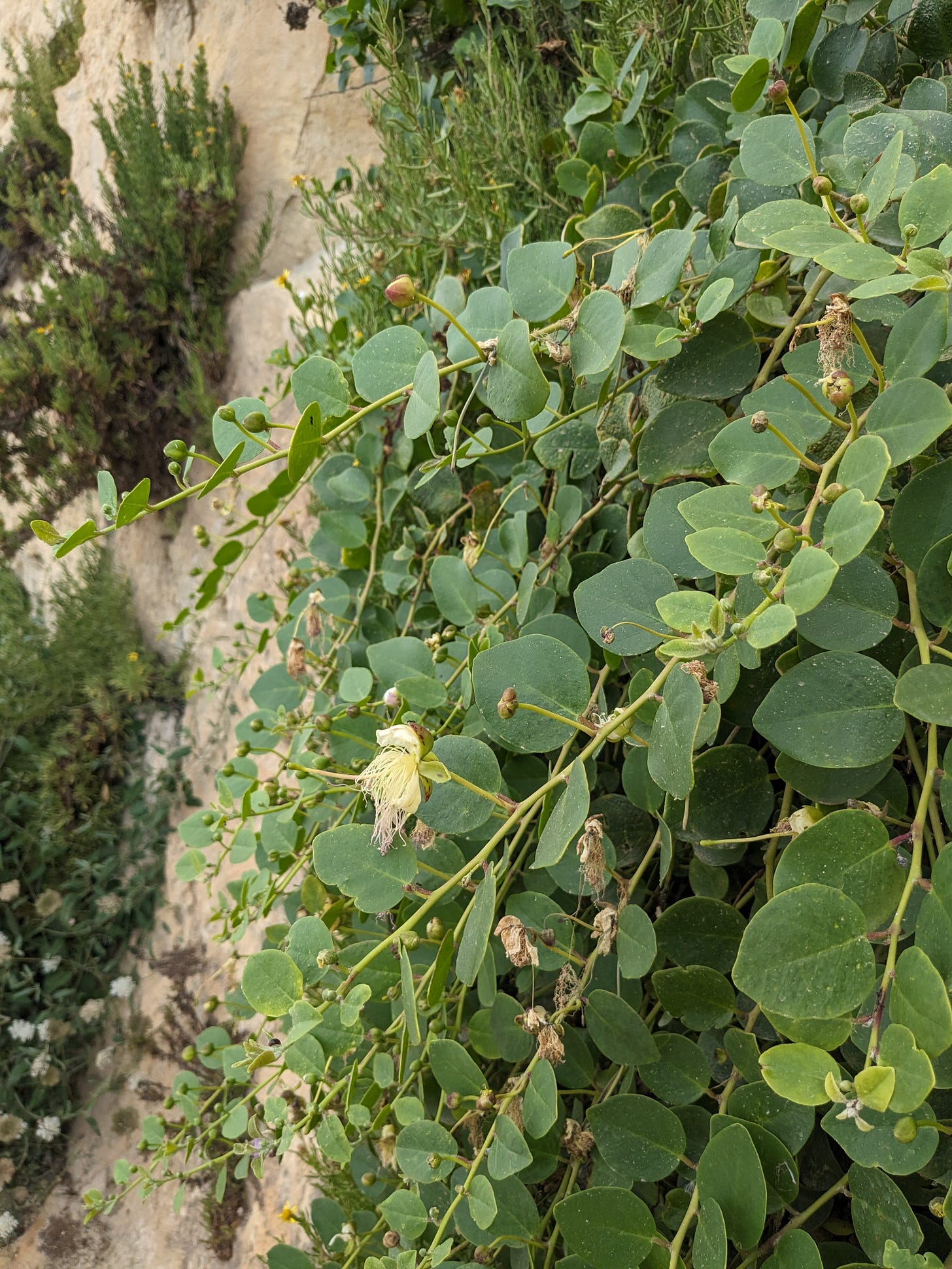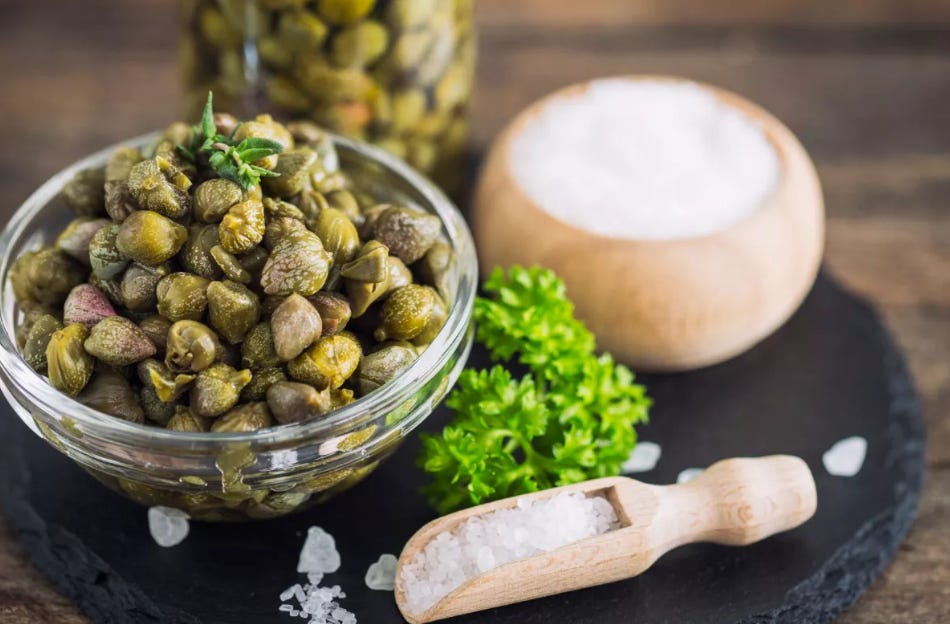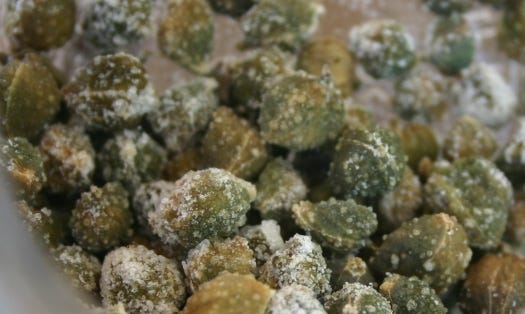Malta's capital, Valletta, a city steeped in history, boasts golden limestone buildings that whisper tales of empires past. Yet, amidst this urban landscape, another kind of life thrives. Untamed flora, unassuming wildflowers and tenacious climbers, erupt from cracks and crevices, a testament to nature's enduring spirit. During this post, I'll share my observations of Valletta's street plants, exploring the wild flora that sprouts throughout the city, and take a look at a delightful rooftop garden.
Valletta lays on the narrow Sceberras peninsula and is a fortress city built onto Mount Sceberras in the mid 14th century under the rule of the Knights of St. John. The city is made almost entirely from various grades of local limestone that provides the city with it’s beautiful golden hue.
Wild Plants of Valletta
Being built upon a mountain and elevated for defense purposes there is no natural soil in the city but nonetheless wildlife has found its place. You’ll often come across Antirrhinum siculum a wildflower endemic to Malta growing comfortably on the 500 year fortified walls.
At the very eastern tip of Valletta below the city walls there is a track along the rugged shoreline. The city walls merge with base rock here and the area appears to be left to vegetate naturally making it a great place to observe some classic shoreline Mediterranean plants. I would assume all of these plants are calciphilic given the lime based substrate they are growing in.
You can get to the track from point A or B on the below map and the highest diversity and population of plants are around the wall section marked C. This is also a great place to swim in the crystal clear waters with some great jumps from the rocks to the sea and good snorkeling spots with plenty of fish around.
Among the plants to be found here are one of my favorites, Capparis spp. the plants that bear the tasty Capers that grace many Mediterranean dish. You can find instructions on how to harvest and prepare capers at the end on this post.
There are two species of Capparis that grow in Malta, Capparis orientalis - Caper bush, which is the most widely cultivated plant for Caper production and, Capparis spinosa - Spiny Caper photographed above and below. Capparis spinosa also produces edible capers and I was pleased to learn that the Caper leaves can be used in salads and fish dishes, pickled or boiled and preserved in jars with brine. Furthermore they can be used as a substitute of rennet – to separate milk into solid curds – in the production of high-quality cheese. The Leaves and roots can also be used to make a decoction by boiling them with the extraction used on skin rashes.
Also growing in this area is what I think is a Rock Samphire, possibly Crithmum maritimum, a popular culinary herb in Mediterranean cuisine. The leaves and stems have a strong, salty, and slightly bitter flavor that is reminiscent of seaweed or Samphire - Salicornia europaea. It's often used fresh in salads, pickled, or added to fish dishes, stews, and sauces. The plant is also considered to have some medicinal properties being traditionally used to treat coughs, colds, and stomach ailments.
It’s also appears to be extremely attractive to a variety invertebrates, a common feature of plants in the family Apiaceae/Umbelliferae.
Another striking plant growing along the tracks and within crevices is Limbarda crithmoides - Golden Samphire. This plant is very capable of stabilizing sandy soils and tolerates the harsh conditions of salt spray and wind exposure. Although non-toxic it is rarely used for culinary purposes due the bitter and salty taste of the leaves.
Ground cover plants include what I think is Mesembryanthemum nodiflorum - Lesser Crystal Ice Plant (there are four species of Mesembryanthemum native to Malta) I’m not sure about this species but plants in this genus are reported to have edible leaves and stems eaten raw or cooked. The leaves have an acid flavor, they are thick and very succulent with a slightly salty tang and can also be pickled like cucumbers or used as a garnish.
Malva spp. possibly M. parviflora grows within the M.nodiflorum cover, another edible plant that can be eaten both raw and cooked with a flavor similar to chard, a mild earthy aroma.
For more on the wild plants of Malta see Stephen Mifsud’s excellent website - www.maltawildplants.com
Welcome to our Online Store where you can find Forest Garden/ Permaculture plants, seeds, bulbs, and Polyculture multi-packs along with digital goods and services such as Online Courses, Webinars and eBooks. We hope you enjoy the store and find something you like. It's your purchases that keep our Project going.
You can also find our full list of trees. shrubs and herbs for forest gardens on our nursery website.
Street Plants of Valletta
As well as the wild vegetation that has reclaimed the city over the years, many plants have been introduced and although there are very few street trees in the city, most of the residences have planters outside where the streets are wide enough, often planted with shade tolerant shrubs, cacti and and Citrus spp. where light is available. The city is an excellent place to study the effect of shade/sun dynamics on plants.
My niece spotted an unusual plant growing up a door in Valletta. Stephanotis floribunda - Madagascar Jasmine which isn't actually a jasmine but belongs to Apocynaceae and is native to Madagascar. A twining, sparsely branched liana that can stretch to 6 m in length. It's the intoxicating scent that gives it the jasmine name. I couldn't find much info on the plant and it seems, although not poisonous, there's no history of fruits being consumed by humans and no recorded uses for the plant beyond ornamental.
Olives, Oleander and Hackberry are planted liberally around the perimeter of the city and there are some beautiful landscaped gardens around the Upper and Lower Barrakka. There are also a number of gardens throughout the city including a delightful rooftop garden we’ll look at later.
Around the center of the city Ficus benjamina - Weeping fig are the main feature trees. These trees are very suitable for Mediterranean cites being well-adapted to drought conditions and tolerating relatively low light conditions, a common challenge in urban areas with buildings casting shadows.
They are known to be more tolerant of urban air pollution compared to some other tree species and being evergreen provide a refreshing presence in urban landscapes, even during the winter months. Their glossy green leaves add a touch of elegance and sophistication to avenues, squares, and courtyards and the dense crowns offer valuable shade in hot Mediterranean summers, making them a welcome feature in pedestrian areas and outdoor cafes.
The trees in the Grandmaster Palace Courtyard in the center of Valletta serve as a night time roost for over 10,000 White Wagtails - Motacilla alba local name Zakak Abjad. The birds forage for food in the countryside during the day but make their way back to Palace courtyard for the night, and why wouldn’t they :)
Roof Top Garden - Valletta Design Cluster
Perched on a 400-year-old structure with a fascinating past - once a slaughterhouse, army barracks, and even a bakery - sits a hidden gem: the Valletta Design Cluster's rooftop garden. This delightful public space, open from 8 am to 9 pm, offers a tranquil escape amidst the urban buzz.
It’s small garden just 500m2 and is great example of how to make the most of a small space. There are a number of edibles in the garden including herbs and fruits such as Punica granatum - Pomegranate - Carob - Ceratonia siliqua - Vitis vinifera cv. - Grape growing along side nitrogen fixing shrubs Cercis siliquostrum - Judas Tree and Spartium junceum - Broom.
Low hedging of Viburnum sp. and Rosmarinus officinalis - Rosemary frame the space and Agapanthus planted generously in the borders along the winding pathways attracts bees, butterflies and beetles.
There’s a small pond in the garden with young Koi Carp swimming around an expansive clump of Cyperus papyrus - Paper Reed that looks like an excellent option for harvesting biomass for mulch. Famous for its use in during the ancient Egyptian period as Paper , it's not actually a reed or a rush but a sedge. There's a handy botanical rhyme to remember the difference: "Sedges have edges, rushes are round, and grasses are hollow straight up from the ground." Cyperus papyrus has triangular stalks, which identifies it as a type of sedge.
Other fruiting plants in the garden include Myrtus communis - True Myrtle - Beyond its lovely appearance and delicious berries, Myrtus communis holds a fascinating history as a symbolic plant. In ancient Greece and Rome, victors in athletic games wore wreaths of Myrtle, while brides donned them as a symbol of marital happiness. It is considered by some that the burning bush encountered by Moses in the Old Testament might have even been a Myrtus communis! The edible berries ripen to a beautiful dark blue in the autumn, adding a pop of color to the plant's winter beauty. The berries are most commonly used cooked in jams, sauces, or even liquors.
Santolina chamaecyparissus - Lavender Cotton makes a great groundcover under the old olive trees that have been planted around the garden. A native of Malta as well as many of the islands in the Mediterranean and surrounding countries this versatile plant offers a range of uses beyond its attractive silver foliage and bright yellow flowers. Traditionally, it's been used in folk medicine for a variety of ailments, including digestive issues, mouth ulcers, and joint pain. The leaves and flowers also pack a punch in the insect repellent department, keeping moths, fleas, and even some garden pests at bay. People have used them for centuries to protect their clothes, homes, and gardens from unwelcome visitors.
The essential oil extracted from Santolina's leaves finds its way into perfumes and cosmetics, adding a pleasant fragrance. And while less common, the leaves can even be used sparingly to add a subtle flavor to culinary dishes and the dried flower heads even add a long-lasting pop of color to floral arrangements.
The garden is only a few years old and it was great to see the place teeming with invertebrates and birds including Sardinian Warblers - Sylvia melanocephala. The ground cover was quite sparse in many places with plenty of room for some native succulents a wide range of which exists in the wilds of Malta. I’m looking forward to return next time I’m here and see how things are developing.
Regenerative Landscape Design - Online Interactive Course
Want to learn how to design, build and manage regenerative landscapes? Join us on our Regenerative Landscape Design - Online Interactive Course. We look forward to providing you with the confidence, inspiration, and opportunity to design, build and manage regenerative landscapes, gardens, and farms that produce food and other resources for humans while enhancing biodiversity.
You can access the course material all year around however the live sessions and interactive forums run from May - Oct every year. Members of the Bloom Room receive a 500 EUR discount. To take up this offer become an annual subscribers to our substack and register here with the promo code BLOOM.
I look forward to you joining !
Here’s the instructions for harvesting and preparing capers I mentioned earlier.
Harvesting and Preparing Capers - Capparis spp.
The commercially available capers you find in stores primarily come from Capparis spinosa, also known as the common caper or thorny caper. This species is cultivated for its flower buds specifically for caper production. Not all Capparis species are necessarily suitable for making capers but Capparis orientalis that can be found growing wild in Malta and in many places around the Mediterranean can also be used and are considered by some to have a slightly milder flavor compared to Capparis spinosa capers.
Harvesting:
Timing is key: You want the unopened flower buds, not the blooms! Aim for tight, small buds before they open.
Early riser: Pick them early in the morning for the best flavor and texture.
Selective fingers: Use your fingers or small pruners to gently remove the buds, leaving the stems on the plant.
Repeat harvest: The caper bush can be harvested every 10-12 days during the hot season.
Preparing
Fresh capers are very bitter and not typically eaten raw. They need processing to be palatable. Traditionally, capers are preserved in one of two ways:
Salt-cured: Involves packing the buds with coarse salt, drawing out moisture and developing flavor.
Pickled: Soaking the buds in a brine or vinegar solution for a tangy taste.
Salt-Curing Capers
Ingredients:
Fresh caper buds
Coarse sea salt
Instructions:
Clean and dry: Rinse the caper buds thoroughly and pat them dry with a clean cloth. Discard any damaged buds.
Layer it up: In a clean, dry jar, alternate layers of capers and coarse sea salt. Ensure all the capers are covered in salt.
Weight it down: (Optional) Place a small, clean weight on top of the capers to press out any moisture.
Shake and replenish: Every day, shake the jar to distribute the salt. You might need to add more salt as the capers release moisture.
Patience is key: This process can take a week or longer, depending on the size of the capers. The capers are ready when they become firm and no longer release moisture.
Store it right: Transfer the cured capers to a clean, airtight container and store them in a cool, dry place for up to a year.
Pickling Capers
Ingredients:
Fresh caper buds
White vinegar
Water
Salt
(Optional) Herbs and spices like bay leaves, peppercorns, or dill seeds.
Instructions:
Soak it out: Rinse the capers and soak them in fresh water for 3-4 days, changing the water daily. This removes some bitterness.
Brine time: Prepare a brine solution by simmering equal parts white vinegar and water with salt. You can add herbs and spices for extra flavor at this stage.
Jar it up: Pack the soaked capers into a sterilized jar and pour the hot brine over them, ensuring all capers are submerged.
Seal the deal: Seal the jar tightly with a sanitized lid.
Waiting game: Let the pickled capers sit at room temperature for 3 days, then transfer them to the refrigerator for at least a week before using. They will continue to develop flavor over time and can be stored for several months.
If you don’t have access to these Mediterranean maritime plants, a plant that can be grown pretty much anywhere in the world is Tropaeolum majus - Garden Nasturtium. If you can resist eating the spicy orange flowers they will form into pea sized seeds and these can be processed the same way and used as substitute for capers.
Enjoy !
Support Our Project
If you appreciate the work we are doing you can show your support in several ways.
Become a member of the Bloom Room. A $70 annual subscription to our Substack provides you with access to live sessions, design tutorials, a members forum and more, see details here.
Make a purchase of plants or seeds from our Nursery or Online Store
Joining us for one of our Practical Courses or Online Courses
Comment, like, and share our content on social media.
Want to learn more about Regenerative Landscape Design? Join The Bloom Room!
The Bloom Room is designed to create a space for more in-depth learning, for sharing projects and ideas, for seeking advice and discovering opportunities.
Ultimately, it aims to build a more intimate, interactive, and actionable relationship between members, a way for the Bloom Room community to support each other’s projects and learning journeys, and to encourage and facilitate the design, build, and management of more regenerative landscapes across our planet.
What you can expect as a member of the Bloom Room
As a member of the Bloom Room you can expect;
Access to an interactive forum where you can ask questions, direct what type of content you would like to see as well as share your own content and projects.
Monthly live session featuring general Q&A and tutorials on design software for creating and presenting polycultures.
Live session every month for members to showcase your projects, plans, designs, and gardens, with guest speakers from the community.
Full Access to all of the content on Substack
A 50% discounts on all of our online courses
Future opportunities to join our Global Regenerative Landscape Design and Consultancy Service, with potential roles for those with the will and skill to join our design team.
An opportunity to take part in the group ownership of a Regenerative Landscape. You will find more details on that here.
Become a paid subscriber to our Substack to join. The annual subscription is currently $70 and the monthly subscription is $7 (monthly subscription excludes discounts for products and services) . You can join here, we look forward to meeting you!

